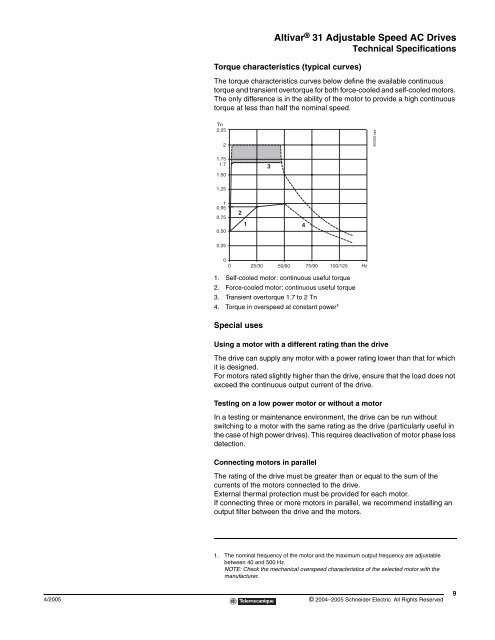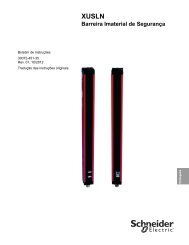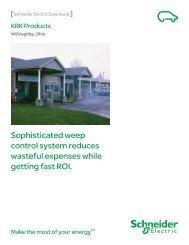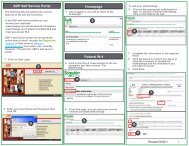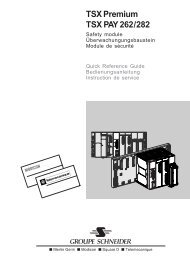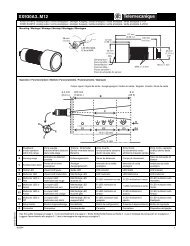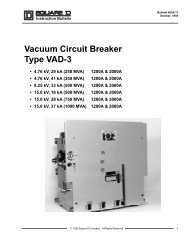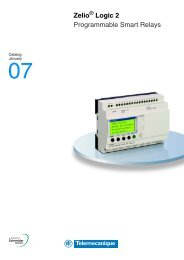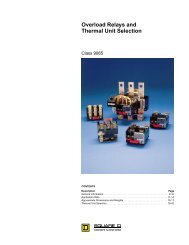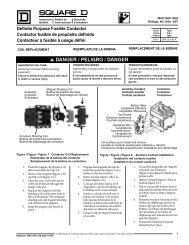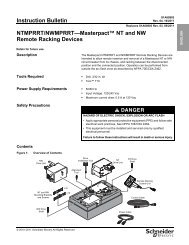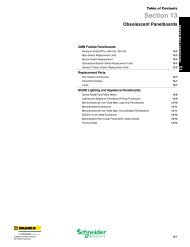Altivar 31 - Square D
Altivar 31 - Square D
Altivar 31 - Square D
You also want an ePaper? Increase the reach of your titles
YUMPU automatically turns print PDFs into web optimized ePapers that Google loves.
<strong>Altivar</strong> ® <strong>31</strong> Adjustable Speed AC Drives<br />
Technical Specifications<br />
Torque characteristics (typical curves)<br />
The torque characteristics curves below define the available continuous<br />
torque and transient overtorque for both force-cooled and self-cooled motors.<br />
The only difference is in the ability of the motor to provide a high continuous<br />
torque at less than half the nominal speed.<br />
Tn<br />
2.25<br />
2<br />
1.75<br />
1.7<br />
1.50<br />
1.25<br />
1<br />
0.95<br />
0.75<br />
0.50<br />
0.25<br />
2<br />
0<br />
0 25/30 50/60 75/90 100/120<br />
1. Self-cooled motor: continuous useful torque<br />
2. Force-cooled motor: continuous useful torque<br />
3. Transient overtorque 1.7 to 2 Tn<br />
4. Torque in overspeed at constant power1 Special uses<br />
Using a motor with a different rating than the drive<br />
The drive can supply any motor with a power rating lower than that for which<br />
it is designed.<br />
For motors rated slightly higher than the drive, ensure that the load does not<br />
exceed the continuous output current of the drive.<br />
Testing on a low power motor or without a motor<br />
In a testing or maintenance environment, the drive can be run without<br />
switching to a motor with the same rating as the drive (particularly useful in<br />
the case of high power drives). This requires deactivation of motor phase loss<br />
detection.<br />
Connecting motors in parallel<br />
The rating of the drive must be greater than or equal to the sum of the<br />
currents of the motors connected to the drive.<br />
External thermal protection must be provided for each motor.<br />
If connecting three or more motors in parallel, we recommend installing an<br />
output filter between the drive and the motors.<br />
1. The nominal frequency of the motor and the maximum output frequency are adjustable<br />
between 40 and 500 Hz.<br />
NOTE: Check the mechanical overspeed characteristics of the selected motor with the<br />
manufacturer.<br />
4/2005 © 2004–2005 Schneider Electric All Rights Reserved<br />
1<br />
3<br />
4<br />
Hz<br />
563322.eps<br />
9


